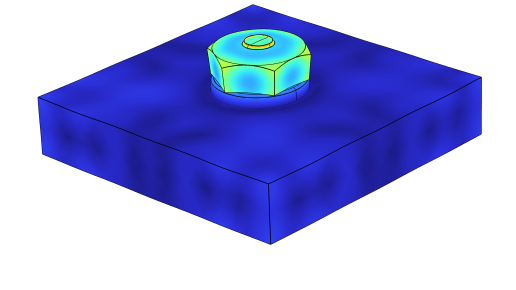Project description
The aim of the project is to develop and qualify a statistically validated method for monitoring the preload force of bolts on the basis of electromechanical impedance spectra. The operational safety of high-strength bolted joints depends crucially on sufficient preload force, the loss of which can cause serious damage during operation due to loosening, creeping or loosening. A cost-effective and permanently applicable method within the framework of structural health monitoring (SHM) is intended to continuously monitor the bolt force and thus enable early detection of anomalies or damage.
Focal points of the project
Development and qualification of a method for preload force monitoring on bolts based on electromechanical impedance spectra / guided waves.
The method must be able to
-
Reliably detect bolt forces (statistical significance) taking into account the "true positive rate" of a binary classifier (priority 1), even under
-
varying ambient conditions (temperature) (Priority 1) and at the same time
-
monitor the sensors / actuators independently (priority 2).
Everything at a glance
Research methods & procedure
FE preliminary examinations
Model design and selection of suitable piezo sensors.
Calibration of the preload measurement
- Production of the test specimens, fitting the screws with strain gages
- Carrying out / evaluating the calibration tests
- Carrying out / evaluating the calibration tests
Experimental trials
- Temperature and preload tests (4 constellations, 20°C)
- Temperature and preload tests (4 constellations, 30°C - 70°C)
- Temperature and preload tests (2 constellations damage, 20°C)
- Temperature and prestressing force tests (2 cons. damage, 30°C - 70°C)
Temperature compensation
- analytical compensation in the time domain
- Empirical compensation in the frequency domain
Test evaluation of preload and temperature influence
- Temperature and preload tests (4 constellations, 20°C)
- Temperature and preload tests (4 constellations, 30°C - 70°C)
Monitoring the measuring chain
- Development of a concept for monitoring the measuring chain
- Evaluation of tests (2 constellations of damage, 20°C)
- Evaluation of tests (2 constellations of damage, 30°C - 70°C)
FE examinations
- Calibration of the FE model
- Carrying out parameter studies
Guide
- Basics of bolt force measurement
- Carrying out EMI measurements
- Evaluation of EMI measurements


